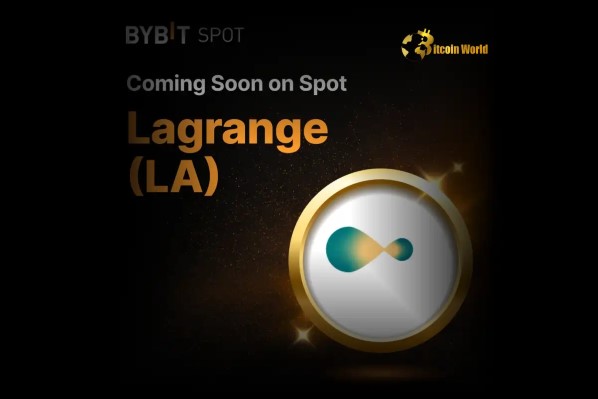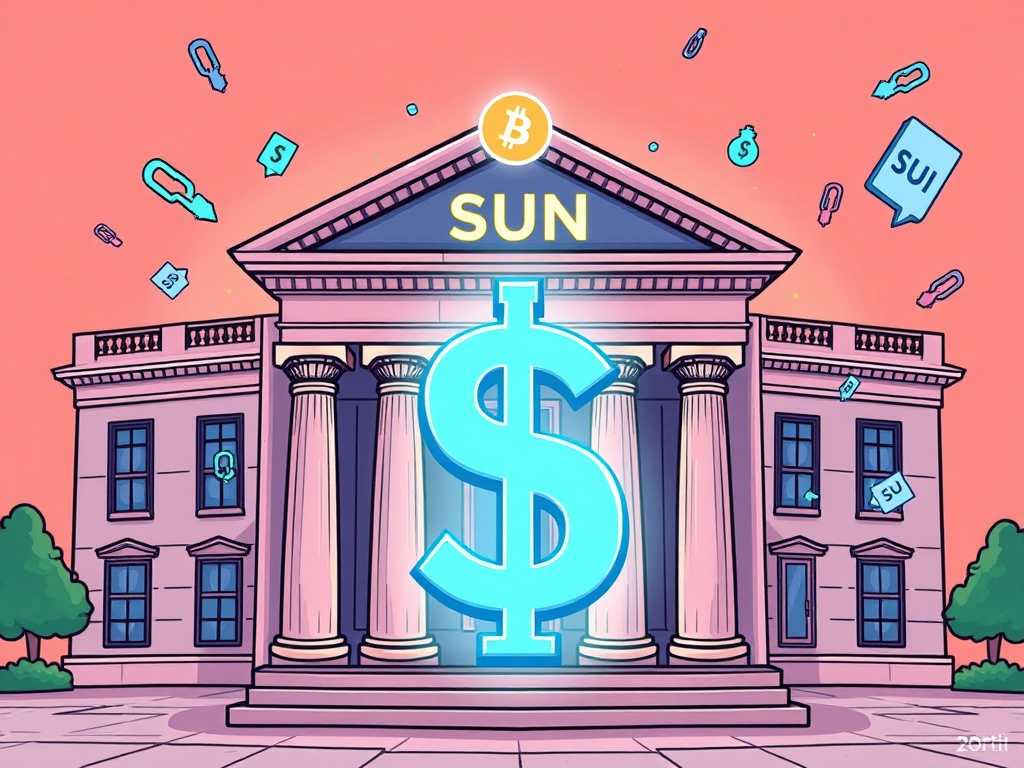BitcoinWorld

Fed Rate Cuts: Pivotal Divisions Emerge as US Central Bank Delays Action
The world of finance, including the dynamic cryptocurrency market, often hangs on every word from central banks. Recently, a significant whisper from a key source has sent ripples through these markets: the U.S. Federal Reserve is not yet prepared for immediate Fed rate cuts. This revelation, coming from Nick Timiraos, a Wall Street Journal reporter often seen as an unofficial voice for the Fed, highlights growing internal divisions that could shape economic policy for months to come.
Understanding the Whisperer: Who is Nick Timiraos and Why Do His Words Matter for Fed Rate Cuts?
In the intricate dance of monetary policy, certain voices carry more weight than others. Nick Timiraos is one such voice. As a prominent reporter for the Wall Street Journal covering the Federal Reserve, his insights are meticulously dissected by economists, analysts, and investors worldwide. Why? Because Timiraos has a well-established track record of accurately reporting on the Fed’s internal deliberations and upcoming policy shifts, often just before official announcements. He is widely regarded as someone with deep connections within the central bank, making his commentary on topics like Fed rate cuts akin to an early signal from the institution itself.
His recent statement on X (formerly Twitter) indicating that officials are not ready to resume interest rate cuts this week, despite expectations for eventual reductions, is therefore not just another news report. It’s a critical piece of information that sets market expectations and offers a rare glimpse into the Fed’s current mindset. When Timiraos speaks, the market listens, especially concerning something as impactful as the trajectory of interest rates.
Why the Fed Isn’t Ready for Immediate Fed Rate Cuts?
For months, the Federal Reserve maintained a unified front, pausing interest rate hikes amidst concerns over inflation, particularly that driven by tariffs. The collective decision was to hold rates steady, allowing previous increases to work their way through the economy. However, the economic landscape is always evolving, and what was once a unified stance has begun to fracture.
The primary reasons for the Fed’s current reluctance to initiate immediate Fed rate cuts, as per Timiraos’s report, stem from a nuanced assessment of current economic data:
- Inflation Appears Milder: While inflation has indeed cooled from its peaks, it hasn’t consistently hit the Fed’s 2% target. Some officials might prefer more definitive proof of sustained disinflation before easing monetary policy.
- Signs of Labor Market Softening: The labor market, while still robust, is showing early signs of cooling. This could be interpreted in two ways: as a sign that previous rate hikes are working effectively without causing a recession, or as a signal that the economy is weakening too rapidly, necessitating cuts. The division lies in how these signs are weighed.
- Desire for More Data: The Fed operates on a data-dependent framework. Even with positive trends, policymakers often prefer to see several more months of consistent data before making significant policy pivots like Fed rate cuts. This cautious approach aims to avoid premature actions that could reignite inflation or destabilize markets.
This cautious approach means that despite some positive economic indicators, the internal consensus for an immediate pivot to cutting rates simply isn’t there yet.
The Great Divide: Unpacking the Fed’s Three Camps on Interest Rate Cuts
The notion of a perfectly unified Federal Reserve is often a myth. Different policymakers, with varying economic philosophies and regional perspectives, frequently hold diverse views. According to the recent report, the Fed is currently split into three distinct camps regarding the path forward for Fed rate cuts:
-
The Patient Hawks: This group, likely comprising a significant portion, believes that while inflation is moderating, it’s still too early to declare victory. They advocate for maintaining current interest rates for a longer period, ensuring inflation is firmly on a path to 2% before considering any cuts. Their primary concern is avoiding a ‘stop-go’ policy that could lead to inflation resurgence.
-
The Data-Dependent Centrists: This camp acknowledges the positive developments in inflation and the labor market but emphasizes the need for more conclusive data. They are open to Fed rate cuts but only when the evidence unequivocally supports such a move without risking inflation. They are the swing voters, highly influenced by incoming economic reports.
-
The Dovish Advocates: A smaller but vocal group, these policymakers are increasingly concerned about the potential for overtightening to harm the labor market and broader economic growth. They see sufficient evidence of disinflation and a cooling economy, advocating for earlier and potentially more aggressive Fed rate cuts to prevent an unnecessary slowdown or recession.
This internal friction, with two governors expected to dissent in upcoming decisions, underscores the complexity of managing an economy emerging from a unique inflationary period. The balance between these camps will dictate the timing and magnitude of future Fed rate cuts.
What Are Markets Watching on July 30th? Jerome Powell’s Crucial Press Conference
With the Fed’s internal divisions laid bare, all eyes will turn to the press conference scheduled for July 30th, following the Federal Open Market Committee (FOMC) meeting. This is where Chair Jerome Powell steps into the spotlight, tasked with communicating the Fed’s collective decision and providing forward guidance. Market participants will be dissecting every word, inflection, and nuance in his statement and answers to questions, specifically looking for:
- Signals for September: The primary focus will be on whether Powell hints at a possible Fed rate cut in September. Even a subtle acknowledgment of the improving inflation outlook or concerns about economic growth could be interpreted as a green light for future easing.
- Assessment of Economic Data: How Powell characterizes the current state of inflation and the labor market will be crucial. Does he lean towards optimism, suggesting that the conditions for cuts are maturing, or does he maintain a cautious stance, emphasizing continued vigilance?
- Addressing Internal Divisions: While Powell won’t explicitly detail the three camps, his rhetoric might attempt to unify the message, or subtly acknowledge the different viewpoints without undermining the Fed’s credibility.
The outcome of this press conference could significantly influence market sentiment, impacting everything from stock prices and bond yields to the volatile cryptocurrency market. Any strong indication towards or away from near-term Fed rate cuts will be a major market mover.
How Do Fed Rate Cuts Impact the Broader Economy and Crypto?
The Federal Reserve’s interest rate decisions have a profound ripple effect across the entire financial ecosystem. Understanding these impacts is crucial for investors, especially those in the crypto space:
-
Traditional Markets:
- Stocks: Lower interest rates generally make borrowing cheaper for companies, potentially boosting profits and making equities more attractive relative to bonds. Growth stocks, particularly in tech, often benefit as their future earnings are discounted at a lower rate.
- Bonds: Bond prices typically rise when interest rates fall, as existing bonds with higher yields become more valuable.
- Housing: Mortgage rates tend to decline, making homeownership more affordable and stimulating the housing market.
-
The Cryptocurrency Market:
- Increased Risk Appetite: When traditional investments offer lower returns (due to lower interest rates), investors often seek higher-yield or higher-risk assets. Cryptocurrencies, known for their volatility and potential for high returns, can become more attractive in such an environment.
- Liquidity Inflow: Lower rates can lead to more liquidity in the financial system. Some of this capital might flow into speculative assets like crypto, driving up prices.
- Dollar Weakness: Fed rate cuts can weaken the U.S. dollar. A weaker dollar can make dollar-denominated assets, including Bitcoin, more appealing to international investors, as their purchasing power increases.
- Inflation Hedge Narrative: While the Fed aims to control inflation, some crypto investors view Bitcoin, in particular, as a hedge against inflation and traditional financial system instability. When rates fall, concerns about fiat currency debasement can sometimes resurface, bolstering this narrative.
The anticipation of Fed rate cuts often precedes the actual event, causing markets to price in these expectations. This is why Timiraos’s early insights are so valuable, allowing market participants to adjust their strategies proactively.
Challenges and Future Outlook for Fed Rate Cuts
The path forward for the Federal Reserve is fraught with challenges. Balancing the need to tame inflation with the desire to avoid a deep recession is a delicate act. The emerging divisions within the Fed highlight the complexity of this task. Looking ahead, several factors will continue to influence the timing and pace of Fed rate cuts:
- Incoming Economic Data: The Fed will remain highly data-dependent. Key reports on inflation (CPI, PCE), employment (non-farm payrolls, unemployment rate), and economic growth (GDP) will be scrutinized.
- Global Economic Conditions: International economic developments, including growth in major trading partners and geopolitical events, can also impact the Fed’s decisions.
- Market Expectations: While the Fed aims to be independent, it cannot entirely ignore market reactions. Significant market volatility or instability could influence its approach.
The September meeting now looms large, with market participants eagerly awaiting further signals from Chair Powell. The journey to normalized interest rates is proving to be a winding one, shaped by evolving economic realities and internal policy debates.
Conclusion
The latest insights from Nick Timiraos serve as a crucial heads-up: the U.S. Federal Reserve is not yet aligned on immediate Fed rate cuts, despite growing signs of milder inflation and a softening labor market. The emergence of three distinct camps within the Fed underscores the complex balancing act they face. As markets keenly await Jerome Powell’s press conference on July 30th for any signals regarding a potential September cut, the implications for the broader economy and particularly the volatile cryptocurrency market are significant. Staying informed about these monetary policy shifts is paramount for anyone navigating today’s interconnected financial landscape, as they directly influence liquidity, risk appetite, and investment flows.
Frequently Asked Questions (FAQs)
Q1: What is the significance of Nick Timiraos’s statements regarding Fed rate cuts?
Nick Timiraos is a Wall Street Journal reporter widely considered an unofficial spokesperson for the Federal Reserve due to his accurate reporting on their internal deliberations. His statements are often seen as early indicators of the Fed’s upcoming policy decisions, including those related to Fed rate cuts, making them highly influential for market participants.
Q2: Why are there divisions within the Federal Reserve regarding interest rate cuts?
Divisions have emerged because while inflation appears milder and the labor market is softening, some policymakers believe it’s still too early to cut rates without risking a resurgence of inflation, while others are concerned about overtightening and its impact on economic growth. This creates differing views on the optimal timing for Fed rate cuts.
Q3: What are the three camps within the Fed concerning Fed rate cuts?
The three reported camps are: the Patient Hawks (who prefer holding rates longer to ensure inflation is fully tamed), the Data-Dependent Centrists (who are open to cuts but require more conclusive economic data), and the Dovish Advocates (who believe conditions warrant earlier and potentially more aggressive Fed rate cuts to support economic growth).
Q4: What are markets expecting from Jerome Powell’s July 30th press conference?
Markets are primarily focused on whether Chair Jerome Powell will signal a possible Fed rate cut in September. Investors will scrutinize his language for any hints about the Fed’s future monetary policy trajectory, his assessment of economic data, and how he addresses the internal divisions.
Q5: How do Fed rate cuts typically impact the cryptocurrency market?
Fed rate cuts generally increase liquidity in the financial system and can boost investor risk appetite, making higher-risk assets like cryptocurrencies more attractive. They can also lead to a weaker U.S. dollar, potentially making dollar-denominated crypto assets more appealing, and reinforce the narrative of crypto as an inflation hedge.
Q6: What does the speculation about a ‘September rate cut’ imply?
The speculation about a ‘September rate cut’ implies that market participants believe the Federal Reserve might initiate its first interest rate reduction at its September meeting. This expectation is driven by improving inflation data and a softening labor market, although the Fed’s internal divisions suggest it’s not a guaranteed outcome.
If you found this analysis insightful, consider sharing it with your network! Understanding the Federal Reserve’s stance on Fed rate cuts is crucial for anyone navigating today’s financial markets, including the dynamic world of cryptocurrency. Your shares help us reach more readers who can benefit from this critical information.
To learn more about the latest crypto market trends, explore our article on key developments shaping Bitcoin price action.
This post Fed Rate Cuts: Pivotal Divisions Emerge as US Central Bank Delays Action first appeared on BitcoinWorld and is written by Editorial Team





